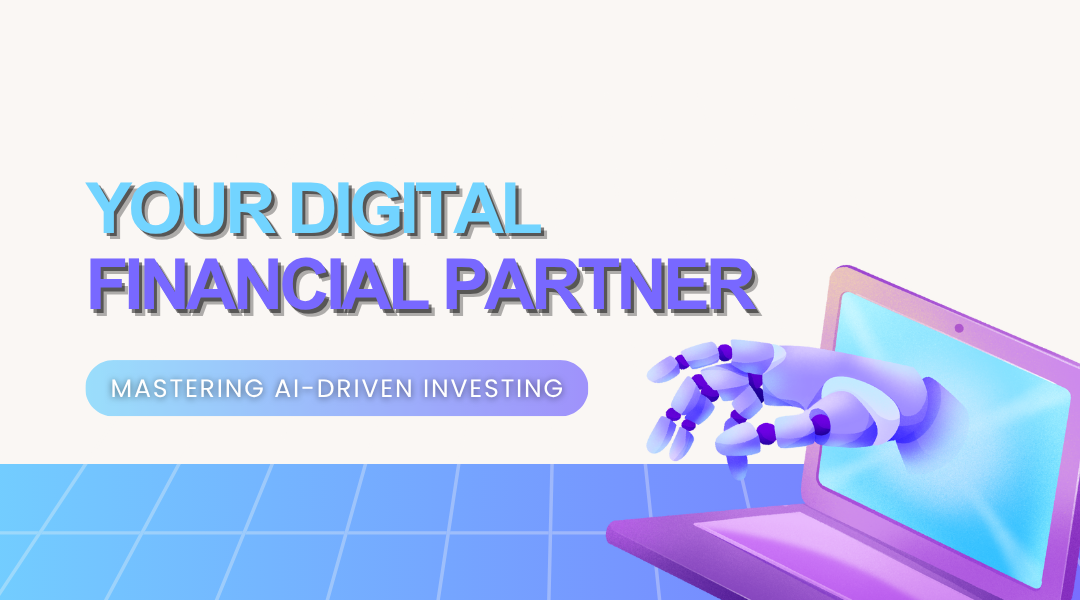Introduction: The New Landscape of Personal Finance
Remember when managing investments required endless spreadsheets, expensive brokers, and a tolerance for financial jargon? Those days are fading fast. We’re entering an era where sophisticated wealth management fits in your pocket, powered by algorithms that work tirelessly to grow your money. This isn’t about replacing human judgment – it’s about augmenting it with tools that were once exclusive to Wall Street professionals. The question is no longer whether to use technology in investing, but how to partner with it wisely to build the future you envision.
1. Meet Your Financial Co-Pilots
Today’s investment apps feel less like cold calculators and more like knowledgeable partners. They fall into several categories, each with a different strength:
- The Long-Term Gardener: These platforms focus on steady growth over decades. You share your life goals – buying a home, funding education, retirement – and the AI becomes your financial gardener. It automatically plants seeds across different asset classes, weeds out underperformers, and ensures your portfolio receives just the right amount of risk and sunlight to flourish over time.
- The Market Interpreter: This type of app acts as your research assistant, scanning thousands of data points you’d never have time to review. It might notice that several tech companies are suddenly hiring battery specialists, suggesting a coming breakthrough in energy storage worth investigating.
- The Strategy Playground: Before risking real money, these apps let you test your investment theories in realistic market simulations. You can practice navigating market crashes or boom periods, developing the emotional discipline needed for real-world investing without the financial consequences.
A Real-World Scenario: Maria, a graphic designer, uses a “Long-Term Gardener” app for her retirement savings. The platform recently adjusted her portfolio after detecting that she’d started freelance work, automatically creating a more conservative allocation to account for her now-variable income.
2. The Human Touch in an Algorithmic World
The most successful investors understand that technology is a tool, not a replacement for their own judgment. Your role evolves from number-cruncher to strategic director:
- Values-Based Guardrails: You set the ethical boundaries. If you prefer to avoid tobacco or fossil fuel stocks, the AI will honor those preferences while still finding strong opportunities within your defined parameters.
- Context Provider: Algorithms process data, but humans understand nuance. When an AI flags a retail stock dip as a buying opportunity, you might recognize that the company’s popular CEO just resigned – context that changes everything.
- The Patience Keeper: In a world of instant transactions, your most valuable role may be maintaining long-term perspective. The AI will present countless micro-opportunities, but your job is to stay focused on the multi-year strategy you’ve established.
What This Looks Like: David’s investment app suggested pouring money into a fast-rising tech stock. Instead of following blindly, he remembered similar patterns from the dot-com era and set a strict limit on how much he’d invest, protecting himself when the stock eventually corrected.
3. Navigating the Psychological Pitfalls
Technology doesn’t eliminate emotional challenges – it just changes their nature:
- The Overconfidence Trap: When algorithms deliver several winning suggestions, it’s easy to develop excessive trust. Smart investors maintain healthy skepticism, remembering that past performance never guarantees future results.
- The Responsibility Gap: It’s tempting to blame “the algorithm” when trades go wrong. Successful investors take ownership of all outcomes, recognizing they ultimately approved the strategy.
- Information Overload: Constant notifications and data streams can trigger impulsive decisions. The disciplined investor sets boundaries, perhaps checking their portfolio only weekly despite the AI’s real-time monitoring.
A Common Pattern: Sarah found herself checking her investment app dozens of times daily, reacting to every minor fluctuation. She solved this by turning off price alerts and scheduling just two monthly “money dates” to review her portfolio’s health.
4. Small Steps, Big Results
You don’t need substantial wealth to start investing intelligently:
- The Spare Change Strategy: Modern apps can round up your everyday purchases to the nearest dollar, automatically investing the difference. Over years, these micro-investments compound into meaningful sums.
- Behavioral Nudging: Your AI partner might notice patterns in your spending and suggest small, painless ways to invest more. If you typically spend $50 on Friday dinners but skipped this week, it might ask if you’d like to invest that amount.
- Democratic Access: Through fractional shares and investment pools, you can now own pieces of assets that were previously inaccessible – from commercial real estate to rare art collections – with surprisingly small amounts of capital.
Real Impact: James, a recent college graduate, started with just $25 weekly automated investments. By his 30th birthday, consistent small contributions combined with compound growth had built a $58,000 nest egg.
Finding Balance in the Digital Finance Era
The revolution in personal investing isn’t about handing over control to machines. It’s about forming a partnership where technology handles the computational heavy lifting while you provide the wisdom, values, and long-term vision. The most successful investors of this new era will be those who leverage technology to execute their strategy while maintaining their emotional balance and ethical compass.
True wealth building has always required patience, discipline, and clear thinking. What’s changed is that these qualities are now amplified by powerful tools that make sophisticated strategies available to everyone. The ultimate goal isn’t just accumulating numbers in an account, but using these new capabilities to build financial security and freedom on your own terms.
